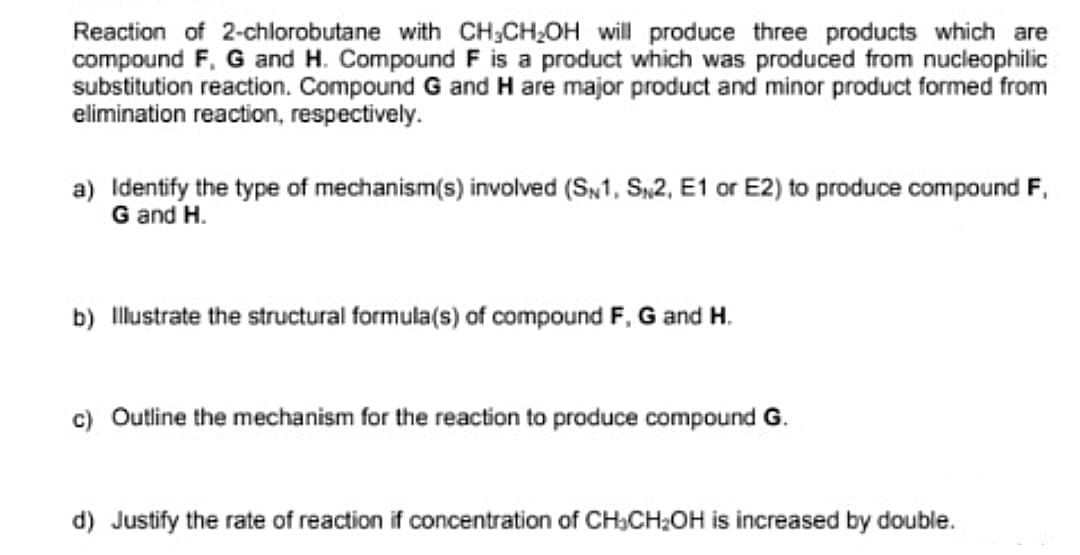Reaction of 2-chlorobutane with CH;CH2OH will produce three products which are compound F, G and H. Compound F is a product which was produced from nucleophilic substitution reaction. Compound G and H are major product and minor product formed from elimination reaction, respectively. a) Identify the type of mechanism(s) involved (SN1, Sx2, E1 or E2) to produce compound F, G and H. b) Illustrate the structural formula(s) of compound F, G and H. c) Outline the mechanism for the reaction to produce compound G. d) Justify the rate of reaction if concentration of CH,CH;OH is increased by double.
Reaction of 2-chlorobutane with CH;CH2OH will produce three products which are compound F, G and H. Compound F is a product which was produced from nucleophilic substitution reaction. Compound G and H are major product and minor product formed from elimination reaction, respectively. a) Identify the type of mechanism(s) involved (SN1, Sx2, E1 or E2) to produce compound F, G and H. b) Illustrate the structural formula(s) of compound F, G and H. c) Outline the mechanism for the reaction to produce compound G. d) Justify the rate of reaction if concentration of CH,CH;OH is increased by double.
Chapter10: Organohalides
Section10.SE: Something Extra
Problem 19MP: The formation of Br2 from NBS first involves the reaction of NBS with HBr to form an iminol...
Related questions
Question
asapppp...tq

Transcribed Image Text:Reaction of 2-chlorobutane with CH;CH,OH will produce three products which are
compound F, G and H. Compound F is a product which was produced from nucleophilic
substitution reaction. Compound G and H are major product and minor product formed from
elimination reaction, respectively.
a) Identify the type of mechanism(s) involved (SN1, S,2, E1 or E2) to produce compound F,
G and H.
b) Illustrate the structural formula(s) of compound F, G and H.
c) Outline the mechanism for the reaction to produce compound G.
d) Justify the rate of reaction if concentration of CH,CH:OH is increased by double.
Expert Solution
This question has been solved!
Explore an expertly crafted, step-by-step solution for a thorough understanding of key concepts.
Step by step
Solved in 3 steps with 3 images

Knowledge Booster
Learn more about
Need a deep-dive on the concept behind this application? Look no further. Learn more about this topic, chemistry and related others by exploring similar questions and additional content below.Recommended textbooks for you

